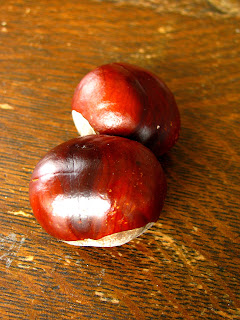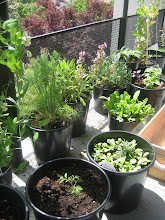I found a chestnut tree! The kind that makes nuts you can eat! The other day I spent an hour stomping nut jackets in the gutter outside somebody I don't know's house! It didn't seem like nearly such a dodgy behavior at the time; I think my roots were showing. My crazy chinese roots, that is. In my defense, urban foraging is a very Portland thing to do. At least scrounging a bagful of fallen chestnuts on a shiny October morning is not like scrubbing around in the grass on your hands and knees looking for ginko nuts that smell like poo in the dark and the rain.
Plus, everybody knows that chestnuts are a thing you eat, providing that you get the kind that are edible. So how do you tell the difference? Wikipedia of course! But really, it's easy to tell. The edible kind is on the left. They have zebra stripes that go from top to bottom, and a little fuzzy tassel on the end. The tassel can get broken off, so the important part is the stripes.
 |
| wood grain = wouldn't eat that |
 |
| Stripes = sounds tasty to me. |
The ones that you can't eat are on the right. See how they have this subtle wood grain pattern? Also, no tassel. Not even a place where the tassel would be. Smooth as a baby's butt. Those are the kind called horse chestnuts. The jackets also look quite different. Horse chestnuts look like the head of a mace, with just a few big points on them. Sweet chestnuts look like a little green hedgehog. They have a dense covering of amazingly prickly spines, which is why you stomp them gently to get the nuts out. Wear stout shoes, and be careful not to bounce one up onto your ankle. Gloves would be a good idea too.
 |
| AKA 'conkers' |
 |
| imagine if that fell on you. |
Chestnuts are unusually low in fat and high in water and starch for nuts, making them vulnerable to dehydration and mildew. Unless you are going to eat them right away, you should freeze them. I put them in ziploc bags. Later, I'll investigate some recipes.







No comments:
Post a Comment